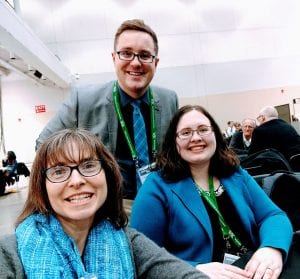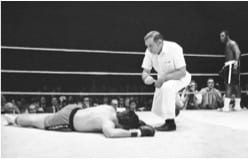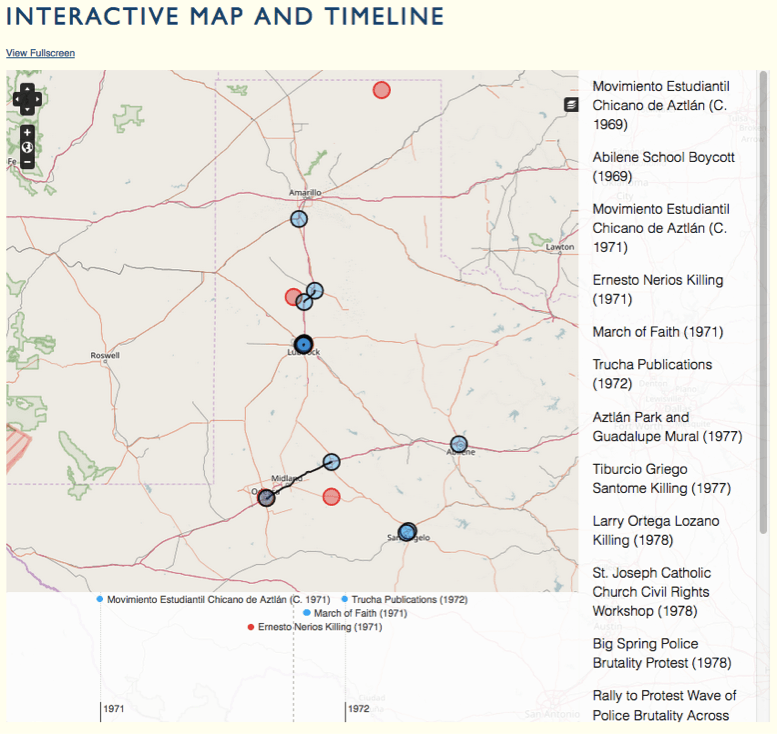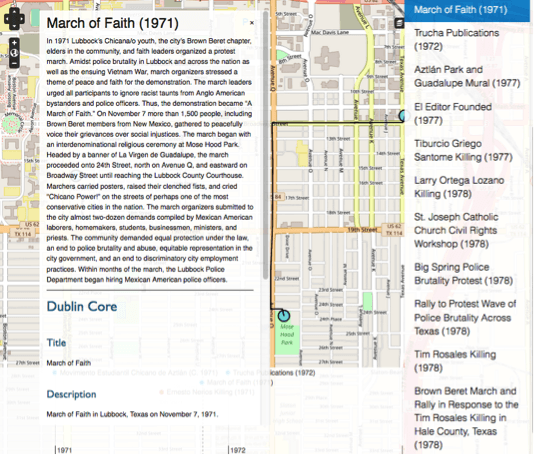By Joel Zapata
The 2018 Organization of American Historians Annual Meeting in Sacramento, California (April 12-14) featured seventeen digital history sessions and workshops. Within the sessions that I had the opportunity to attend, critical questions for history practitioners—elementary school teachers, graduate students, university professors, archivists, museum professionals, and more—abounded. What does it mean to be a twenty-first century historian? In producing historic knowledge, who is excluded and what communities are included? How do we take history beyond paywalls and costly books that exclude the vast majority? How can educators reach native digital students? How can scholars blend traditional print medias and digital medias to reach broader audiences but still fulfill academia’s print-based publication requirements? How can we present complex ideas clearly to the widest audience possible? Undoubtedly, the ways we answer these questions will determine the future of the past.
And if the future of history is digital, the sessions I attended made clear that history’s future is also collaborative. One thought-provoking session, titled “Teaching Contested History: Digital Archives and Digital Maps,” was composed of librarians, professors, archivists, and a public-school official. The panelists described the collection and digitization of primary sources regarding the court-ordered integration of Boston Public Schools in various mediums, including Beyond Busing: Boston School Desegregation Archival Resources. In the citywide effort, educators, archivists, and activists created an approachable primary-source-based curriculum focused on teaching historical and civil literacy to Boston public school students by documenting the city’s profound racial strives. The panelists concluded that the endeavor countered fake history—or “the liberal myth”—that minimized Boston’s divisive and yet to be completed school desegregation process, brought social and social justice awareness, demonstrated the hard truths of history at grade level, and taught students how the past informs society’s present state. Hence, the panelists demonstrated how digital collaboration can result in achieving the highest aspirations within the practice of history.

Another forward-looking session, “Writing Race, Gender, and Education: Digital Book and Video Projects,” showcased work by professors and students, which included a discussion over Educating Harlem. This project, out of Teachers College, Columbia University, is a multiyear and multifaceted collaboration between students and professors regarding Harlem’s educational history from the Harlem Renaissance through the twentieth century. The project’s creators intended it to become a digital platform that contains a curated archival collection and exhibits, an edited scholarly volume, as well as an after-school program for Harlem high school students to learn the educational history of their community. With these different outlets, the creators of Digital Harlem hope to connect the historically oppositional white university to its surrounding African American community, attempting to work with the community instead of against it.
 The session also featured a presentation by Jack Dougherty (Trinity College) on open access scholarly books, of which he has published two and is writing another, On The Line: How Schooling, Housing, and Civil Rights Shaped Hartford and its Suburbs, in collaboration with fellow professors and students. This web-first book, under contract with Amherst College Press, “makes visible the hidden [school] boundaries that divide the Hartford region, and tells the stories of civil rights struggles to cross over, redraw, or erase these lines.” As Dougherty demonstrated, the book’s narrative is enhanced through interactive maps, documents, and video—an impossibility within traditional books. Moreover, Dougherty and his collaborators are writing On The Line openly online, allowing for readers to explore and comment before completion. The book’s development demonstrates how editing can go beyond the closed editing of conventional books while remaining part of a university press. Perhaps most promisingly, On The Line is an example of accessible and easily discoverable scholarship that is not hidden behind paywalls. From this session, I left with a sense that open-access (i.e., freely available) digital books are a meaningful way of democratizing history, opening the past to the wider public, students, and scholars. Such a publication medium may be especially attractive for civil rights historians, providing another avenue to connect with and include the people they write about. The session chair and commentator, James Fraser (New York University), rightfully concluded that the panelists were “part of what we all need to become” if history is to remain—or become more—relevant in the twenty-first century.
The session also featured a presentation by Jack Dougherty (Trinity College) on open access scholarly books, of which he has published two and is writing another, On The Line: How Schooling, Housing, and Civil Rights Shaped Hartford and its Suburbs, in collaboration with fellow professors and students. This web-first book, under contract with Amherst College Press, “makes visible the hidden [school] boundaries that divide the Hartford region, and tells the stories of civil rights struggles to cross over, redraw, or erase these lines.” As Dougherty demonstrated, the book’s narrative is enhanced through interactive maps, documents, and video—an impossibility within traditional books. Moreover, Dougherty and his collaborators are writing On The Line openly online, allowing for readers to explore and comment before completion. The book’s development demonstrates how editing can go beyond the closed editing of conventional books while remaining part of a university press. Perhaps most promisingly, On The Line is an example of accessible and easily discoverable scholarship that is not hidden behind paywalls. From this session, I left with a sense that open-access (i.e., freely available) digital books are a meaningful way of democratizing history, opening the past to the wider public, students, and scholars. Such a publication medium may be especially attractive for civil rights historians, providing another avenue to connect with and include the people they write about. The session chair and commentator, James Fraser (New York University), rightfully concluded that the panelists were “part of what we all need to become” if history is to remain—or become more—relevant in the twenty-first century.
Digital history is a broad field that encompasses distant reading or textual analysis, the digitization of documents or artifacts and related metadata, data manipulation, mapping methodologies, digital publishing, and more. The sessions I attended did not focus on all the possible ways of doing digital history. Yet, they all centered on one of the most significant outcomes of digital history—provoking empathy from an audience through the growing ways of doing history. That is, digital history can provide us additional avenues of humanizing the past. The sessions I attended also focused on growing the audiences that historians and other history professionals reach. Overall, at 2018 OAH Annual Meeting, presenters along with audience members reimagined how history can grow within an increasingly connected digital world.








